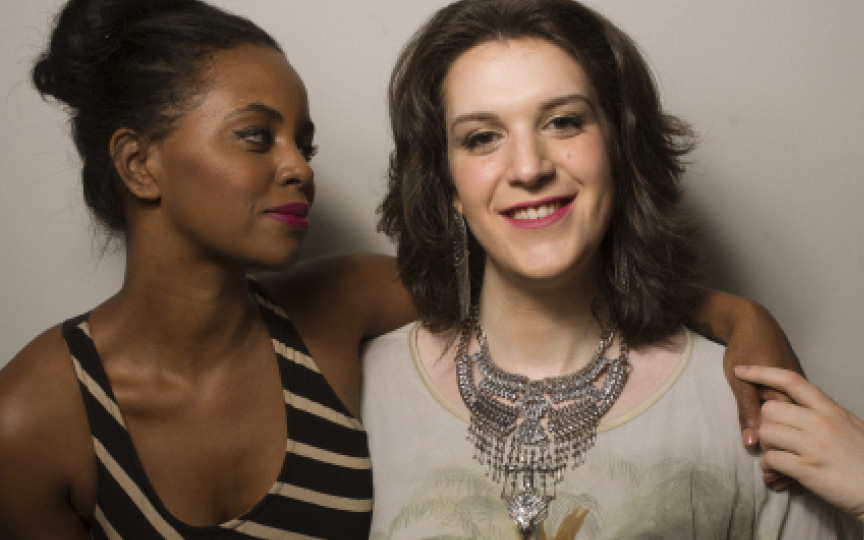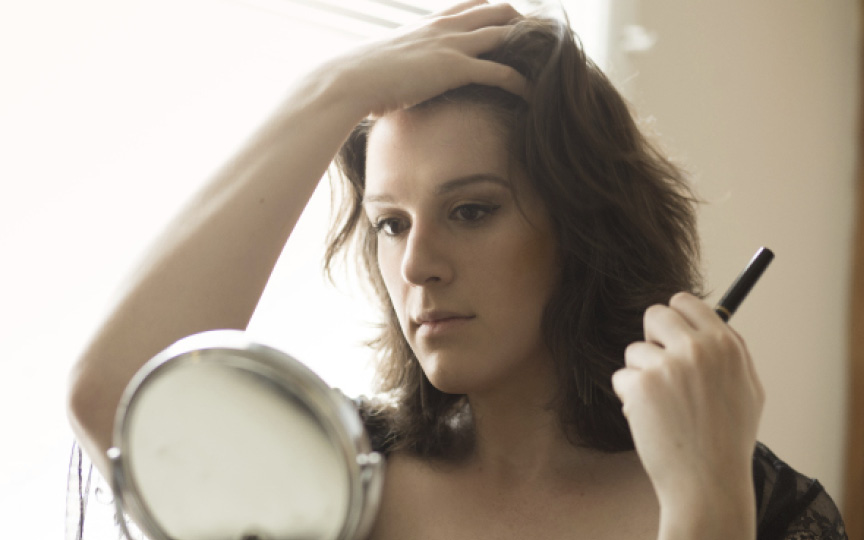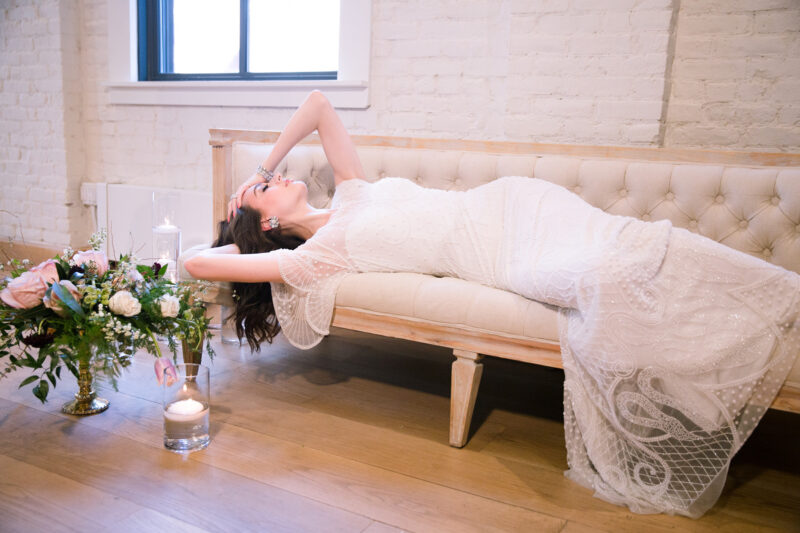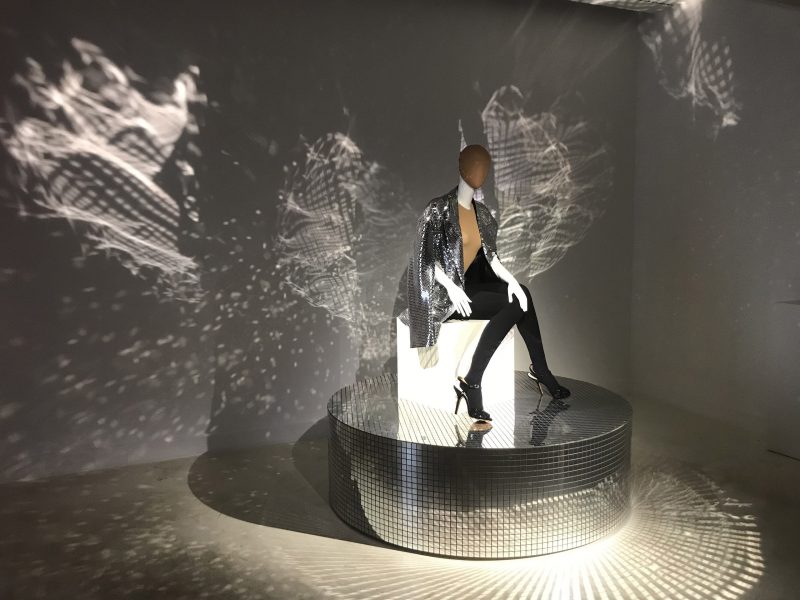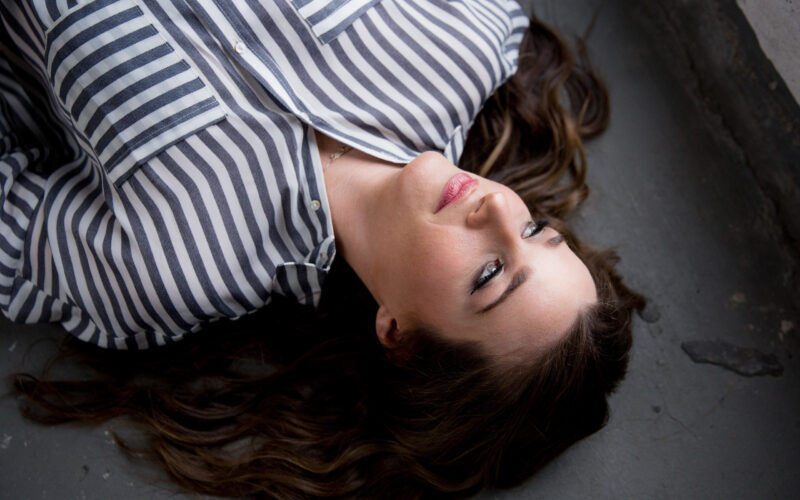People like to put things into little boxes. We are labeled, packaged and sent out into society carrying our physical and mental identities with us. Even those of us who feel we are the most open-minded are often somewhat programmed to judge a book by its cover. We all tend to take things at face value because of the social norms society has created.
Growing up, I remember feeling like an outcast for listening to rock music and I was constantly accused of “speaking like a White girl” or “trying to be White”, by both Black and White kids in my school. This followed all throughout high school. But in my mind, I was just being myself. Somehow who I was did not seem to match the stereotype or expectation of who I was supposed to be on the outside. It saddens me to admit that these same words still come at me to this day, as an adult.
So, what happens when we break the barriers of how mainstream society perceives us? What if you are not only trapped in the box that society has placed on you, but also in the manifestation of your own physical body?
Working in the Arts, I have had the opportunity to be surrounded by many people that have, at one point in their lives, felt trapped by a stereotype or feared the backlash of their true identities. Yet, they have somehow found the strength, support and love for themselves regardless of the challenges they encountered.
These boxes of racial stereotypes, class disparity and sexuality are much more talked about and displayed in mainstream media today. One minority’s community has hit the spotlight right now and is making a controversial splash on T.V. screens everywhere.
I, like much of the world, have been intrigued by watching the transformations taking place on reality shows like E!’s “I am Cait,” which profiles 65 year-old Bruce Jenner—now Caitlyn Jenner— who has finally come out as transgender. “I am Jazz,” on TLC, is a heartbreaking reality show following a 14 year-old high school girl, crushing on boys, the everyday trials and tribulations of being a teenager all while identifying as transgender. You can’t help but feel deeply for her and her desire to be understood and accepted. However, this heroic child is being met with hate speech and death threats on a daily basis for being open with who she truly believes she is.
Amazon and Netflix are progressing the movement by throwing full support behind T.V. shows with trans stars and storylines like “Transparent.” Out transgender women such as Laverne Cox from “Orange is the New Black” and Jamie Clayton in “Sense8,” are blazing a trail for out trans actors. Lana Wachowski (formally Laurence Wachowski) co-created Sense8 with her brother Andrew, They also created hit movies such as The Matix, Cloud Atlas, V for Vendetta, Speed Racer, etc. The list of transgender people being depicted in the media is booming and subsequently has become less taboo.
Seeing all these brave people, sharing their stories openly, I could not help but notice that someone I once worked with was also transitioning proudly on social media.
Dana Levinson was born and raised in Great Neck, New York. We both graduated from The American Musical & Dramatic Academy after studying musical theatre. Dana, then went on to major in Global Studies (with a focus on the Middle East) at The New School. She is a 26 year-old, accomplished freelance lyricist and composer. For the past year, I have been watching her as she transitions into her true self. She has boldly graced me with an interview detailing her emotional journey to becoming who she is, inside and out.
As a little kid, Dana always fantasized that somehow one day she would be like all of the other girls. You see, Dana was born David. Biologically a boy, who felt completely trapped in a male body. She often dreamt she’d wake up magically transformed into a little girl.
“As I got into elementary school and began to realize this was not going to happen, I started to get depressed. Then puberty hit and was sheer torture. I started to notice that I was attracted to men and not women. As my sexuality developed, I was attracted to men as a woman and desired to be with a man as a woman. I didn’t know what being transgender was, so I came out as gay, explained Dana.
“Coming out as gay to my family was such a nothing thing to them. In fact, I didn’t even tell my parents. I had started coming out to my friends at 11. When I was 15, my mom called me into her room while folding laundry, made small talk and eventually said, ‘by the way, your father and I know you’re gay and we don’t care,” continued Dana.
As a teen, there was a time she was so uncomfortable with her body that she couldn’t fall asleep at night unless she was dressed in women’s clothes.
“I want to clarify, Trans people are not cross dressers. I was secretly dressing as a woman for comfort and because I identified as a female. It had nothing to do with sex.”
At around age 15, she did a simple Internet search, ‘Why do I want to be a girl?’ that led her to find out what being transgender was.
“For the first time I knew I could transform my body to match how I was feeling inside. As much as it was a relief to finally understand these strong feelings of disassociation from male identity and my discomfort and sometimes disgust with my physical form, I was also terrified by it.”
At 16, she began to realize that transitioning was inevitable.
“I wanted to be a musical theatre actor but my voice changing was pretty traumatic. I knew if I transitioned I could train my speaking voice to sound more feminine, but I couldn’t do anything about my singing voice, thus ending my musical theatre career before it started. Transitioning meant giving up on a dream I had my entire life.”
This devastated her. She could perhaps change her appearance but ten years ago surgically changing ones voice was not as advanced as it is today. At the time of this interview Dana had just returned from the Yeson Voice Clinic in Seoul, Korea, where under the care of Dr. Kim, she was recovering from Vocal Feminization surgery. Dr. Kim’s pioneering non-invasive techniques have made this surgery much more accessible. These practices have recently been adopted by Dr. Haben in Rochester, NY. Her voice is sweet and gentle but fragile, speaking with me only the second day after a month of silent recovery.
Growing up hiding her desire to be a girl was very difficult. One day on a family trip, her mom found wet women’s clothes hidden away in her room. The self-hatred and dysphoria had become so bad that she could no longer look at her physical form in the shower. Her mother confronted her about it and asked if she wanted to be a girl. Dana denied it immediately. Her severe depression and anxiety continued through high school.
In college, she finally decided to set up an appointment with a therapist who specialized in gender issues. Dana, however, also met a guy who would become her first boyfriend. She canceled her therapy appointment and for a short time, was able to convince herself she could live the life of a gay man. But after a month or two, the utter despair of reality came back full force.
I felt deeply uncomfortable in mind, body, and spirit being a man with another man. I desperately wanted to be a woman with him.
“I felt deeply uncomfortable in mind, body, and spirit being a man with another man. I desperately wanted to be a woman with him.”
Dana illegally ordered testosterone blockers from Canada online. She never told her boyfriend about her gender issues but eventually, after much self-sabotaging, the relationship ended.
“He told me he wasn’t attracted to me anymore and he didn’t know why. I still wonder to this day if it was the testosterone blockers.”
Only 18 years old, Dana was illegally ordering hormones and taking them without medical supervision (which she strongly does not recommend anyone). She was ordering women’s clothing online as well, which she only wore when she was hidden away at home. As she began to notice preliminary changes to her face and body due to the hormones, she freaked out, stopped taking them and purged all of her womanly belongings.
“I graduated from AMDA and moved in with my best friend Sam. Still, I was not out as trans to anyone. I distracted myself with work, partying, alcohol, anything to numb myself”.
At 23, she graduated from The New School and moved back home. She decided hiding the fact that she was trans had gone on long enough. Dana came out first to her best friend Sam. After her parents had been so supportive about having a gay son, Dana feared this new revelation would be too much for the family to handle.
“I came out as trans to my mom first. She actually did not take that too well. But I think as she started to see how much emotional pain I was in, she started to come around. She took it better than many parents would. All I mean by that is that she didn’t understand it at first and struggled with the idea of seeing me as a woman. My dad didn’t miss a beat. He said he loved me no matter what, and then quipped, ‘just don’t pick one of those crazy names’”.
Then, denial once again reared its ugly head. A few weeks before she had an endocrinologist appointment to legally start hormones, she freaked out, canceled it, and stopped seeing her therapist. She retreated back into herself. Never mentioning it again to the three people she told. Instead, she started hitting the gym, attempting to convince herself that a more masculine physique might make her more comfortable with her male body.
Dana allowed another year to go by living as David.
I felt like I had hit a wall in my life and I wasn’t going to surpass it unless I was living my truth.
“I felt like I had hit a wall in my life and I wasn’t going to surpass it unless I was living my truth. Watching “Transparent” on Amazon, there was an episode where Maura is in a talent show and her kids go to see it. As they’re leaving her eldest daughter says ‘what I don’t understand is, if she’s felt this way her whole life, why did she wait so long?’ And suddenly it hit me like a ton of bricks. I reflected on my long history of my gender dysphoria.”
With much courage and the support of her family and friends, Dana enrolled into therapy, this time actually following through. After a year in treatment she was strongly considering transitioning.
During that time she began coming out to more people and wanted to be 100% out to her social and professional network before beginning hormones. She was nervous of what her straight male friends would think but was once again was surprised how much they supported her. She explained how to use the proper pronouns when addressing her, clarifying stereotypes and slowly demystifying the process of transitioning from David to Dana. She sent emails to friends and relatives. She announced on Facebook that she was transitioning into a woman with a heartfelt post. She changed her name and gender on her profile. Then finally on December 1st, 2014 she officially started hormones.
As Dana tells me her story, she knows that she has had a uniquely supportive coming out. Yet, she is painfully aware of how difficult it is for most trans people to come out to family, friends, coworkers and even to oneself.
My positive coming out story, unfortunately, tends to be rather singular.
“I don’t think I can overstate how lucky I am. Still today, in 2015, we see young trans women and trans men being kicked out of their homes, subject to violence, ostracized by friends and family, and discriminated against in the work place. These are huge issues that need to be dealt with in the broader American political and social discourse. My positive coming out story, unfortunately, tends to be rather singular.”
As we spoke a bit about her relationship to the Gay community, it began to sound like there is a very large gap between L.G.B. and Transgender. I asked her if it was time to create a separate umbrella rather then lumping all these groups together.
“I think that often trans people have gotten left behind in the movement for larger LGBT rights and representation. However, we are beginning to see a little shift. In my opinion, not enough, towards talking about things like trans healthcare, homelessness, and suicide rates in trans youth. When I said I never felt I fit in with the gay community, I was speaking more socially. I didn’t relate to other gay men because I didn’t feel like I was a gay man.
“I think L, G, B, T, and Q, I, A, (Lesbian, Gay, Bi-Sexual, Transgender, Queer, Intersex, A-Sexual and Allie) are all sexual and gender minorities that have strength together. There aren’t enough trans people in the world to create the change our community need. We need allies.”
During this process, Dana has been working on a musical called MADAME. The show is a love story between a wealthy white man named Luc and a Creole girl named “Clea” who works at a brothel called ‘Jarreau’s’ in 1896 New Orleans where all of the girls at Jarreau’s are actually young men who dress as women. Conceptualized and written by Larry Hamilton, Dana came on board as composer and lyricist for New York Theatre Film Festival reading series in 2012. This is where I met Dana (pre-transition) and the MADAME team, playing the character “Clea”. I was inspired by the piece and learned that this story is based on true events that were happening at that time.
Hearing Dana’s story should be a motivator for all of us to feel the freedom to share our true identities and to not fear what society may say. Though she still has a few more physical adjustments planned outside of the U.S., when sitting with her, you can’t help but feel she is 100% feminine, delicate and graceful. She is a woman and blossoming everyday. When I asked her about her love life she said she was not dating …yet. She jokes about how she is not ready to “settle down” but hopes to have a husband and children one day.
Whether one is struggling with their gender identity, race or how they fit into the world, watching the sheer fearlessness of someone’s desperate search for internal and external happiness should resonate to all walks of life.
No matter what your opinion is about any of this, we can’t deny that we are all people dealing with finding our own sense of self and identity. Nothing is truly as it seems and it is our job as we navigate this human experience to ask the questions and learn more fully to appreciate the vastness of our nature. I do believe our world is expanding its collective mind and becoming more accepting of things we were never really taught to understand. Yet, there is so much more to open our hearts and minds to. We have a long way to go to debunk and de-box the labels, stereotypes and barriers between true equality, that includes the way we identify ourselves and others.
I must sincerely thank Dana Levinson for her complete openness and honesty and for much more of the interview with her visit my website at www.ThisGirlsGuide.com. To hear more about Dana and Larry’s Musical, MADAME, visit their site and support their journey on Facebook: https://www.facebook.com/MadametheMusical and view clips at: https://vimeo.com/132678742.
I leave you with a lyric from MADAME written by Ms. Levinson, “Perhaps I could be some kinda happy. No matter if some kind is small. But like it or not, some kinda happy is better than no kind at all.”
-Dana Levinson ‘MADAME The Musical’
Follow Dana on: Facebook / Instagram: @Danalevinson88 / Twitter: twitter.com/DanaLMusic
Krystal Joy Brown “KJ Brown” is the Lifestyle & Culture Contributor at Spirit & Flesh bringing you opinions, articles on pop culture featuring healthy & not-so-healthy living, interviews and coverage of current and high profile events. For more info visit her blog ThisGirlsGuide.com or her website KrystalJoyBrown.com

